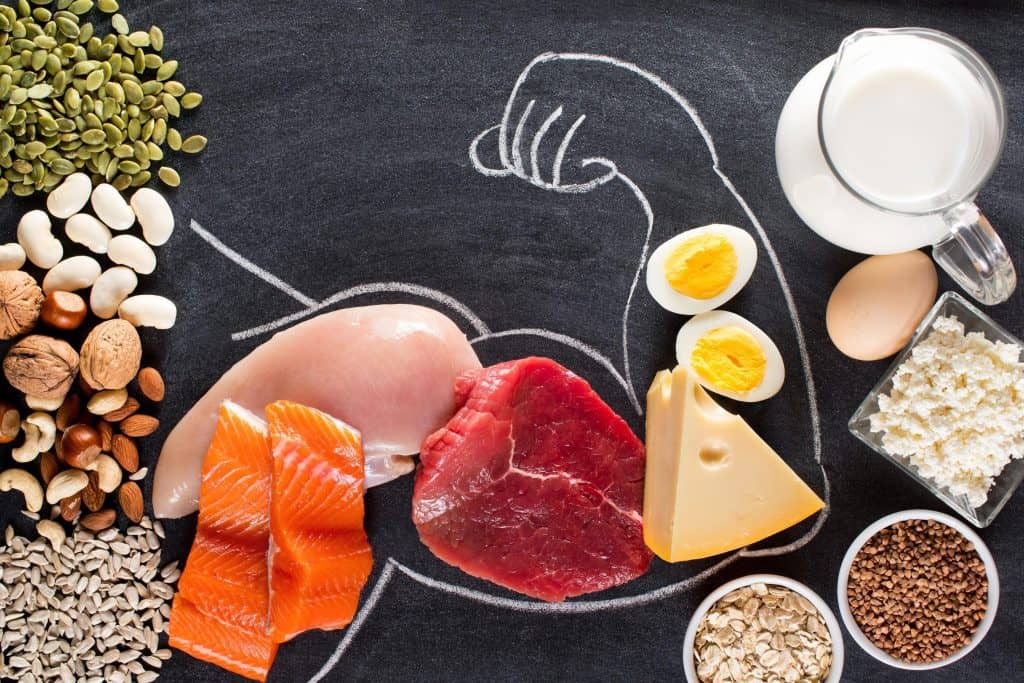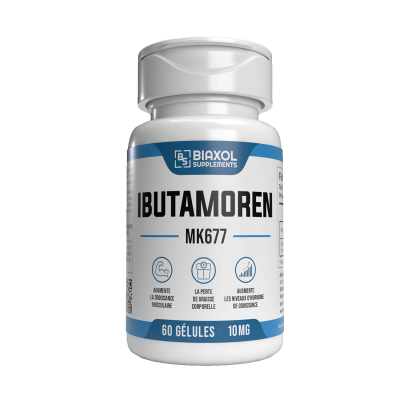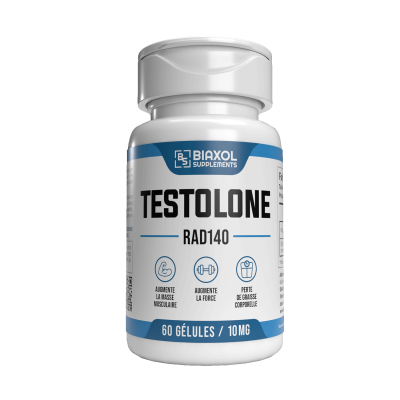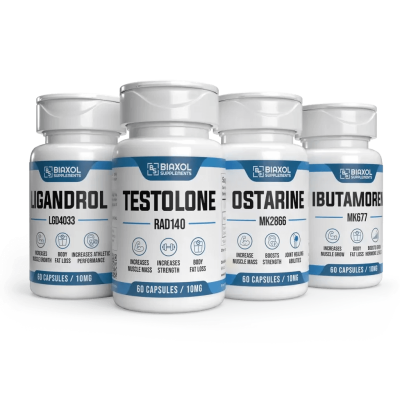En bref : La vitesse à laquelle une personne prend du muscle dépend de plusieurs facteurs : l’intensité des entraînements, la quantité de protéines consommée, l’expérience en musculation, ainsi que l’âge actuel.
L’une des questions les plus fréquentes posées aux coachs sportifs est :
Combien de temps faut-il pour vraiment prendre du muscle ?
Commençons par une chose essentielle : tout muscle gagné est important. Si vous prenez quelques kilos de muscle en un ou deux mois, vous le remarquerez immédiatement. Ceux qui vous entourent mettront peut-être un peu plus de temps à s’en rendre compte, mais cela viendra. Et une fois que les compliments commenceront à pleuvoir, cela vous donnera encore plus de motivation pour continuer à développer votre masse musculaire.
Cependant, la véritable question est :
Que puis-je faire pour gagner du muscle rapidement et efficacement ?
La vérité absolue, c’est que prendre du muscle de manière rapide et durable nécessite d’appliquer des stratégies basées sur la science, qui ont fait leurs preuves.
Vous êtes ce que vous mangez
On a tous déjà entendu quelqu’un dire qu’il allait transformer sa graisse en muscle. Ne vous laissez pas berner. Il est impossible de transformer la graisse en muscle.
Si vous portez ces 10 à 20 kilos de graisse autour de votre ventre, vous n’allez pas, par magie, les convertir en muscle et les déplacer vers vos biceps ou triceps. Cela n’arrivera pas.

If you want to follow a simple and easy-to-follow diet, adopt the eating habits of prehistoric men. You will be much healthier without the need for expensive diets that empty your wallet. Some will say, “But cavemen only lived to be about 30 years old!” That’s true, but it had nothing to do with their diet. Back then, their life expectancy was shortened due to disease, predators, lack of food and clean water, and a multitude of other dangers. Fortunately, these problems are long behind us. After all, when was the last time you encountered a saber-toothed tiger?
To build muscle fast, follow a high-protein diet, add some fruits and vegetables, avoid high-sugar or ultra-processed foods, and hydrate yourself with water and milk. With these habits, you will already be on the right track to reaching your goals.
Protein is the building block for building muscle when combined with strength training. As a bonus, it keeps you feeling fuller for longer, which reduces your junk food intake. Conversely, ultra-processed foods like cookies or chips never fill you up because they have no nutritional value. You end up consuming thousands of unnecessary calories per day, which only increases the fat around your belly and can lead to chronic diseases.
To build muscle (in combination with weight training), some recommend consuming 1 gram of protein per pound of body weight each day. In other words, if you weigh 200 pounds, you should aim for 200 grams of protein per day. This is a great goal, but it can be difficult to achieve at first. Start by aiming for half that amount, and once you identify your favorite protein-rich foods, it will become much easier.
High Protein Foods to Add to Your Grocery List
One of the biggest challenges of switching to a high-protein diet is finding tasty foods and eliminating unhealthy items from your fridge. But with enough indulgent options, you’ll happily ditch all the junk food.

Chicken, turkey, fish, and beef are all great options. And the best part? You can prepare them a hundred different ways. Here’s a handy tip: Grill a big batch of meat on Sunday and make enough healthy meals to last you the week. All it takes is a minute in the microwave to reheat your meal when you’re tired, hungry, and tempted by the junk food in your cupboard.
Other protein-rich foods include eggs, nuts, beans, beef jerky, Greek yogurt, and cottage cheese, to name a few. And of course, there are great protein shakes that can give you 30 grams of protein in a minute or two. Just be careful of the hidden sugar and calories in these drinks. Read the labels!
Bodybuilding
Building muscle is all about the right combination of strength training and a high protein diet . Once you find your routine, sets, reps, and weights, it won’t be long before you start seeing your muscles grow.
The scientific word for this process is hypertrophy. This means that when you lift weights, you tear the muscle fibers slightly. As they heal quickly, they grow back stronger and slightly larger than before. And this process continues as long as you exercise consistently.
If you are unsure how to tailor your strength training sessions effectively, seek help from someone with experience. You can also hire a personal trainer for a few sessions and then take over on your own. In addition, there are many online training videos and fitness apps that can be of great help.
Experienced athletes typically train every other day. This allows them to push themselves in the gym while leaving a day off to recover. And if your sessions are lasting much longer than an hour, it may be time to reevaluate your routine. Avoid spending too much time on your phone, like half the people in the gym do. A distraction-free session is much more effective.
Don’t trust the scale… Trust the tape measure
When building muscle, don’t be discouraged if the scale doesn’t show the numbers you’re looking for. Instead, rely on a tape measure.
The great thing about muscle mass is that it burns calories even at rest. So by adding muscle, you’re also shedding stubborn fat. It may not show up on the scale right away, but the tape measure will show you the difference. Take your measurements every week, write them down in a journal, and enjoy the progress.
Ladies, don’t worry!
Women often worry about becoming too muscular or looking too “bulky” when it comes to bodybuilding. This is not the case!
There are people who have been training for decades, and if this myth were true, we would have streets full of 500-pound giants. Women have much lower testosterone levels than men, which makes it harder to gain muscle mass. However, the muscles they do develop will be quality and a source of pride!

So how long does it take to build muscle?
Let’s be clear: there is no simple answer. Some of you may be frustrated that there is no magic solution. But there are several things to consider:
- Do you exercise regularly?
- Is your diet suitable?
- How old are you?
- Are you using the right weights during your strength training sessions?
- Is your training intensity sufficient?
To build muscle, you need to train hard and eat smart, like your life depends on it. If you do this and you’re a beginner, studies show that you can see good results in two months. You might gain about 3 pounds of muscle in that time, but the real benefit is that you’ll also lose a significant amount of fat. Those 3 pounds of muscle will be visible.
If you are already more experienced, maintaining a high-protein diet and lifting weights regularly, you could gain up to 2 kg of muscle per month. Thanks to your years of training, you will probably use heavier weights than a beginner. These higher weights will help you gain muscle mass. However, if you choose to work with 30% less weight than usual and focus on sets with many repetitions, you will still build quality muscle thanks to the constant tension placed on your muscle fibers.
If you maintain a good diet and exercise with intensity and consistency, you can achieve remarkable results. All you need to do is commit to three or four hours of training per week. Not too much of a stretch considering you probably spend 20 hours a week streaming or 5 hours a day on your phone.
You can build great things with small hands, and the same is true for your body: consistency and regularity will be your best allies.
References:
Carbone JW, Pasiakos SM. Dietary Protein and Muscle Mass: Translating Science to Application and Health Benefit. Nutrients. 2019 May 22;11(5):1136. doi:10.3390/nu11051136. PMID: 31121843; PMCID: PMC6566799.
American College of Sports Medicine. Copyright © 2015 American College of Sports Medicine. Created and updated by Donna Cataldo, Ph.D. and Matthew Blair, BS, and is a product of ACSM’s Consumer Information Committee.












